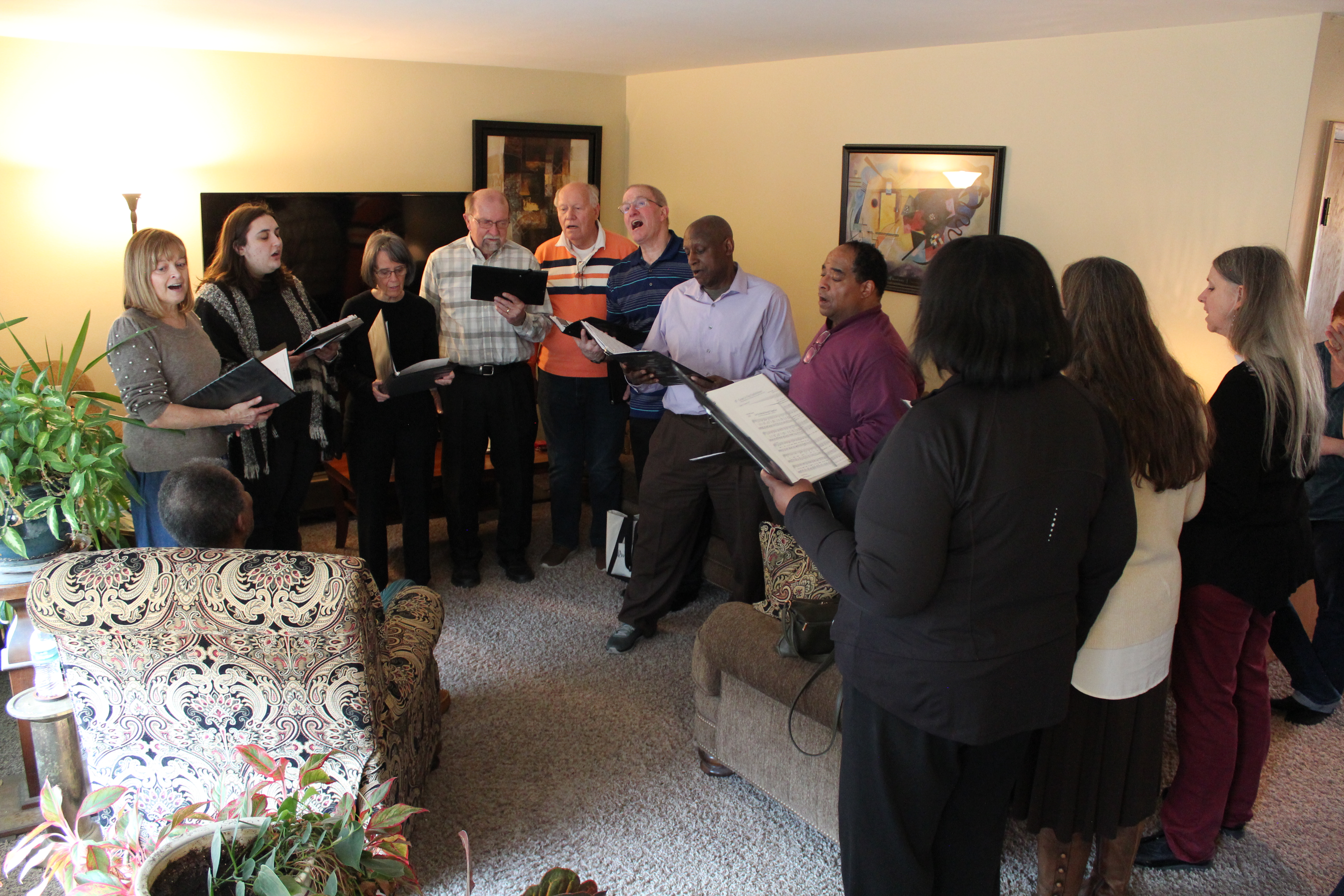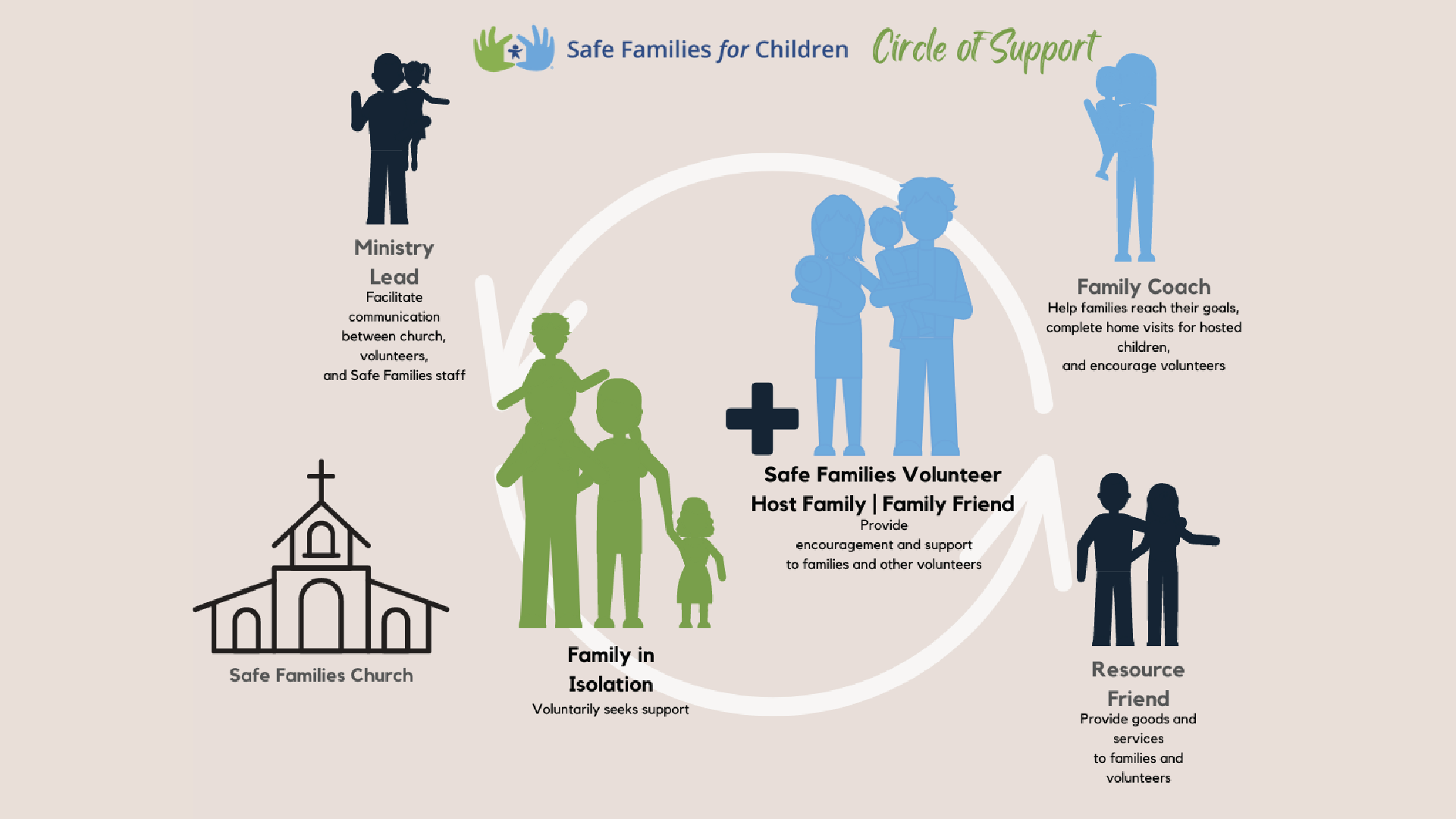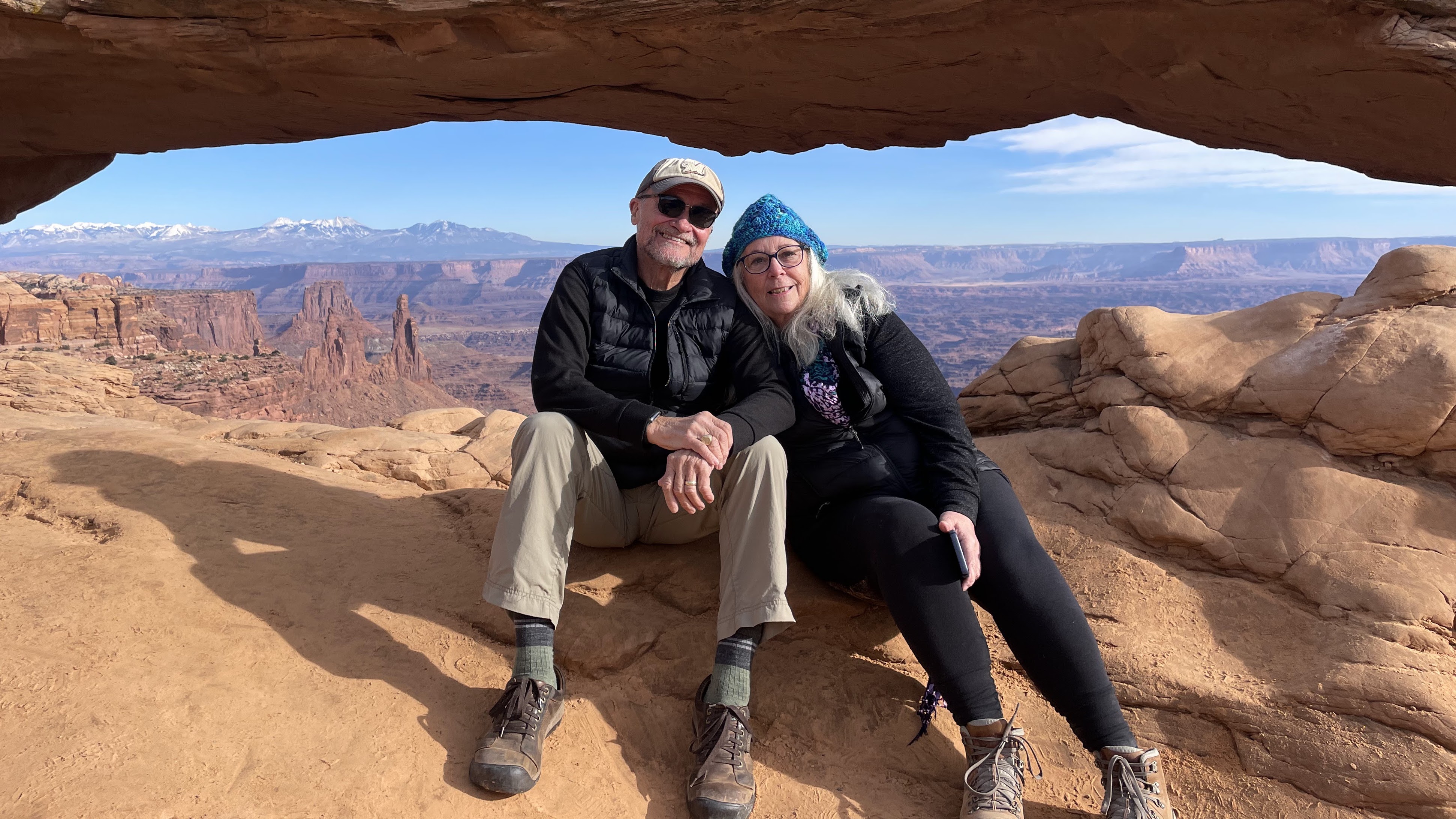The weight of our individual burdens may vary, as does the visibility. Some of us experience immeasurable pain in silence, whereas others choose to turn up the volume amidst their suffering, to show others they are not alone and build strength through community.
Adriana Hayes is a faithful believer whose relationships with God and others have strengthened her spirit amidst a number of lifelong physical challenges; she has used her voice—and her artistic talents, pictured throughout this piece and on the cover—to draw awareness to not only the circumstances we face, but the fortitude we build through witness to others. Let’s help make our big church feel a bit smaller as we get to know Adriana.
Tell us a bit about yourself!
My husband Chris and I have been in Wisconsin for almost 18 years. We have three daughters, along with our chi-weenie, Brie (91 in dog years). In 2017, Chris, Promise (now 15) and I became a licensed foster family, and after five years of being able to love Aalysah (11) and Neriah (6.
5) while in foster care, we adopted them both in 2022. We live in Whitefish Bay and I’m an artist with my degree in Fashion Design. Art is flexible, so I’m able to do freelance work and teach as an adjunct professor at Mount Mary University’s Fashion Design Program, in addition to my primary role at home. I also find joy in writing and speaking about God’s redeeming power of pain and suffering in my life.
What is your connection to Eastbrook Church?
We first heard about Eastbrook through a series of events that led us back to Milwaukee. In January of 2020, we lost a jury trial for Termination of Parental Rights, and we were devastated to learn that it would take another two-plus years to get to another trial. Shortly after that, along with the rest of the world, were thrown into an even greater tailspin when COVID-19 hit. We had been in a small group at our old church that naturally dissolved. If there was a rock bottom, I was pretty sure we had hit it. The Holy Spirit made it clear that we were to move back into Milwaukee County. We ended up in a house seven minutes away from Eastbrook and began attending virtually; immediately, we knew we had found a special community that was diverse in race, age, nationality, and economic status, but unified through the gospel and love of Jesus Christ.
We joined Eastbrook’s Foster and Adoption Support Team (FAST), through which we met blended families who looked similar to ours and came alongside us and prayed for us. Our daughters are involved in the youth ministries, and we have joined a small group with four other families. Chris has attended the Eastbrook Men’s retreat and faithfully gets our girls to the 9:30 am service on Sundays; I had the opportunity to serve on the Middle School team on Wednesday nights, and also ran a small Fashion Design Camp for VBS last summer.
Describe your walk with God. You have experienced different physical, mental, and emotional pain. How have you approached God—and how has He shown Himself to you—in those moments of your life?
I was born with Spina Bifida, which is a failure of the spinal column to form completely in the first six weeks of pregnancy. I’ve had 25 surgeries in my 39 years of life; my first spine surgery was at six months old.
When I was eight years old, I began experiencing kidney infections and tightness in my lower back and legs. An MRI revealed that my spinal cord had re-tethered to the scar tissue from my first spine surgery. I still had quite a bit of growing to do, so another spine surgery was needed to preserve function of my legs and prevent paralysis. This surgery resulted in several complications: three more spine surgeries, two years in and out of the hospital, a Staph Infection, and improper healing for my Dura, the muscle sac that holds Cerebral Spinal Fluid (CSF) and your spine and brain float in, which meant that CSF began leaking out of my incision and causing severe headaches. At one point, I was put on flat bed rest on my back for an entire month, in hopes that a CSF leak under my skin would heal on its own; it was unsuccessful, and a shunt was eventually placed to drain spinal fluid from where it was building up.
It was in the midst of all of this that I realized the significance of the physical pain Jesus endured on the Cross. He became the only person I could talk to who truly understood my pain. I remember clearly telling God that if He was going to allow me to live, He needed to use my pain for something good or else it wasn’t worth it.
 All of these spinal surgeries also caused permanent nerve damage, loss of bladder and bowel function, and severe constipation that grew to have such a negative impact on my health and quality of life that at age 32, I had three surgeries to help my body function. I also developed severe drop-foot; I did not have the strength to pull my foot up when I walked. This launched me into intense physical therapy for two years, during which I was placed in leg braces, and eventually I began a series of 13 leg and foot surgeries involving multiple tendon transfers, reshaping bones, removing pressure sore infections, and Achilles tendon lengthening, to name a few.
All of these spinal surgeries also caused permanent nerve damage, loss of bladder and bowel function, and severe constipation that grew to have such a negative impact on my health and quality of life that at age 32, I had three surgeries to help my body function. I also developed severe drop-foot; I did not have the strength to pull my foot up when I walked. This launched me into intense physical therapy for two years, during which I was placed in leg braces, and eventually I began a series of 13 leg and foot surgeries involving multiple tendon transfers, reshaping bones, removing pressure sore infections, and Achilles tendon lengthening, to name a few.
These surgeries took me through middle and high school and into college, and resulted in severe disfigurement in my legs and feet as well as total loss of sensation and movement in my feet. My feet now function similarly to a severe diabetic foot; my walking depends heavily on the use of leg braces and a cane for balance. During college, I began experiencing numbness in my legs again and went back in for my sixth spine surgery to remove a fist-sized tumor.
Fast forward to 2006: I graduated, got married, and moved to Wisconsin. In 2008, I gave birth to Promise via high-risk C-section. There was a chance that Promise could be born with Spina Bifida, but we chose to cover my pregnancy in prayer with faith that God, who had been faithful in His promises to me, would continue that. We named her based on Psalm 145:13, “The LORD is trustworthy in all He promises and faithful in all He does.”
In 2012, I had another spine surgery done to relieve tension on my spinal cord. At that point, untethering the spine at its original location (L5) would have most likely caused paralysis; as an alternative, an approximate 1” section of spine and ribs were removed from my thoracic spine and then I was fused back together; in short, they cut my torso in half and shortened me by about an inch. It was, by far, the most difficult surgery I have undergone.
Over these years, I quickly became accustomed to physical pain, but I was not sure how to process emotional pain. In high school, I turned to cutting in an attempt to numb everything I was feeling. It was easier for me to transfer the emotional pain I felt into physical pain which I could identify the source and then quickly provide relief from. With continued biblical counseling and psychiatric care over the past 10 years, God has been loving and gracious in bringing me to an understanding that cutting is an addiction just like drugs, alcohol, food, gambling and so many other things, but no addiction can fully heal deep wounds like the power of the Holy Spirit. Addiction robs; the Holy Spirit restores.
What prayers or words of hope can you share with those who may be struggling with similar pain in their own lives right now?
 I could say a lot here, but to boil it down: learn to worship through lament.
I could say a lot here, but to boil it down: learn to worship through lament.
I took a theology course through Eastbrook, and my professor had us write our own lament as we studied the book of Psalms. It was thought-changing for me on many levels. For years, I had struggled with the balance of being honest with those around me about my pain while at the same time not wanting to seem like I was constantly complaining. Those who live in chronic pain will be familiar with this challenge; each day the pain is different and so each day my need for help is different, so I need to talk about it.
Lament was the answer I had been looking for! It provides a rhythm for me where I can lay my raw emotions before the feet of Jesus, while in faith, finishing with what I know (not feel) to be true about God. Romans 8:34 and Hebrews 9:24 tell us that Jesus is actively sitting at the right hand of God and interceding and advocating for the things we lay at His feet. Through the Holy Spirit, God returns our words of lament to us but transforms them into fruit. Lament gives us something productive to do with the emotions that, left to our sinful nature, we would sin out of. Lament allows us to reflect Jesus in the face of our constant pain.
As the theme of this issue is “Carry Each Other’s Burdens,” do you have advice for others who may be walking alongside those coping with chronic pain? What can we do to help carry our loved ones’ burdens?
One of the most helpful questions you can ask is “What do you need today?” because the answer changes daily and the pain isn’t always apparent. There are days where I feel relatively good and I want to take advantage of that and do things for myself, and then there are days where I need help just getting out of bed. Communication is key. Also, let them help carry your burdens and share your needs if asked. Many times this can help counteract feelings of being a burden. Pain creates forced rest which allows a great opportunity to pray for others who are shouldering heavy things. ■
Recommended Posts

Hymns for the Homebound
March 15, 2024

Relief through Relationship: A Focus on Safe Families
March 13, 2024

God Story: Lisa Sinclair
March 13, 2024




